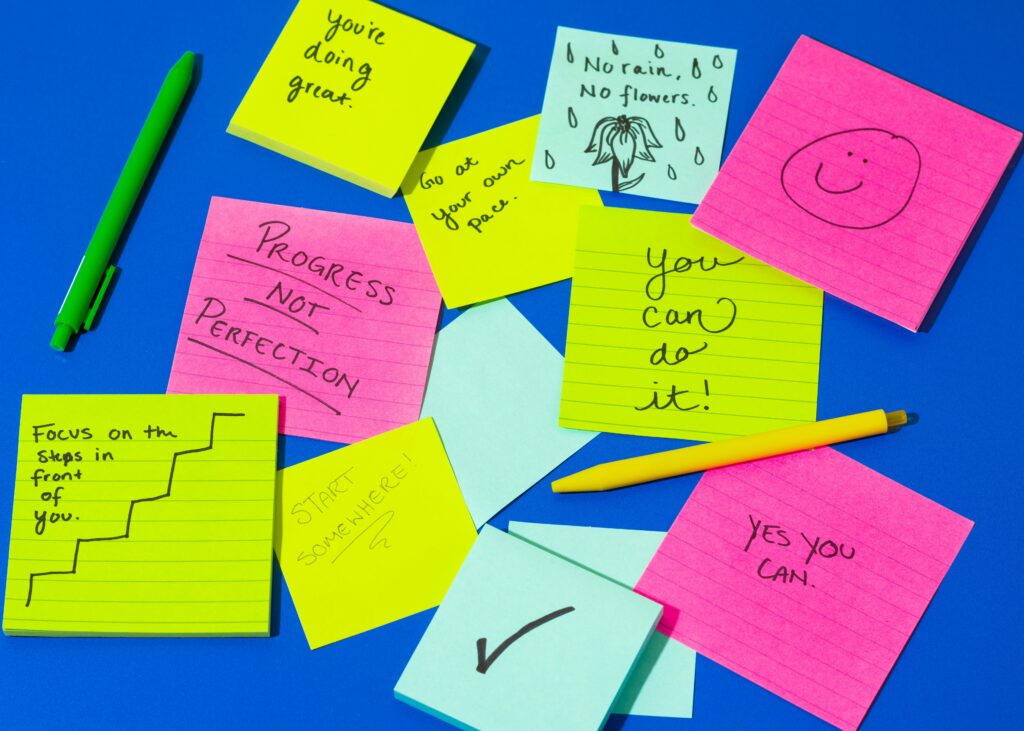We’ve all had those moments when boredom strikes, and we just don’t know what to do with ourselves. Whether you’re stuck in a rut or just need a little boost to get things going, finding ways to be productive can feel like a challenge. But here’s the good news: there are simple, effective strategies you can use to shake off that boredom and jumpstart your motivation. From setting clear goals to embracing creativity, this guide will help you turn those dull moments into opportunities for growth and productivity. Let’s dive into the things to do when you’re bored!
Understanding Motivation

Intrinsic Motivation
Intrinsic motivation is when you are driven by internal desires, such as self-improvement or the joy of learning something new. It’s not about external rewards like money or praise; it’s about what makes you feel fulfilled and purposeful. For example, I’m learning a new skill by taking Italian lessons. My wife is Italian and we’ve been together for over 10 years.
While I was able to get by with the little knowledge I had, most of my connections with her side of the family were surface level at best. Now, we have three children who are fluent in both English and Italian and I would like to build a deeper connection with her parents. Learning to speak Italian has deepened my relationship with her parents, thus aligning with one of my personal values of family first.
Understanding intrinsic motivation is key because it’s more sustainable than external rewards. If you can connect your tasks to personal growth or the positive impact you’ll have on others, you’re more likely to stay motivated in the long run.
Extrinsic Motivation
Extrinsic motivation is driven by external rewards like money, praise, or deadlines. While it can be effective in the short term, relying solely on extrinsic rewards can lead to burnout. Balancing both intrinsic and extrinsic motivators can help maintain a steady flow of productivity.
I. Setting Goals and Priorities

Create a To-Do List
Creating a to-do list is one of the most effective tools for boosting productivity. It helps you clear mental clutter, giving you a clear direction on what needs to be done. A well-structured to-do list serves as a roadmap, ensuring you focus on the most important tasks first. However, don’t just create a long, daunting list—prioritize your tasks based on deadlines and significance. Tasks can fall into different categories, such as urgent, important, or less critical. Avoid the pitfalls of overloading your to-do list by starting with the most urgent or impactful tasks and working your way down.
Breaking down larger tasks into smaller, more manageable chunks is another key to success. For example, if you have a project due in a week, break it down into daily goals. This not only makes the task less intimidating, but also gives you a sense of progress as you complete each step. A to-do list acts as a visual representation of your progress, helping you stay organized and on track.
II. Taking Ownership of Your Life and Productivity

When you take ownership of your life, you transition from feeling reactive to proactive. This means making decisions that reflect your values, goals, and desires. Instead of letting external pressures or people dictate your actions, be deliberate about the choices you make.
Taking control also means accepting responsibility for your actions, both the successes and failures. When you acknowledge that your decisions shape your life, it empowers you to make choices that align with your long-term objectives. For instance, if health is important to you, choose habits that promote well-being, like exercising or eating well, instead of feeling guilty about poor lifestyle choices. This mindset shift can spark motivation because you’ll feel more in control of your life’s trajectory.
Take Ownership of Your Productivity
Taking ownership of your productivity means recognizing that you are responsible for your own time management and task completion. It’s about being proactive and intentional with your work, rather than simply reacting to external demands. When you take ownership of your productivity, you’re more likely to feel motivated and in control.
To take ownership of your productivity, start by setting clear goals and priorities for yourself. Identify what needs to be done and when, and create a schedule that works for you. Use tools like to-do lists and calendars to stay organized and on track. Don’t wait for others to tell you what to do or when to do it—take charge of your own work and make decisions that align with your goals.
Remember, taking ownership of your productivity is not about being perfect or achieving some kind of mythical “work-life balance.” It’s about being intentional and focused, and making the most of the time you have. By taking ownership of your productivity, you can achieve more, feel more fulfilled, and enjoy a greater sense of control over your own life.
Set Boundaries and Learn to Say No
Setting boundaries and learning to say no is an essential part of maintaining healthy productivity habits. When you say yes to every request that comes your way, you can quickly become overwhelmed and burned out. By setting boundaries and learning to say no, you can protect your time and energy, and focus on the things that truly matter.
To set boundaries and learn to say no, start by identifying your priorities and values. What is most important to you? What do you want to achieve? Once you have a clear sense of what you want, you can start saying no to things that don’t align with those goals. Remember, saying no to something that doesn’t serve you means saying yes to something that does.
It’s also important to communicate your boundaries clearly and respectfully to others. Let your co-workers, family, and friends know what you are and are not available for, and be firm but polite in your communication. By setting boundaries and learning to say no, you can maintain healthy relationships, reduce stress, and achieve more in the long run.
III. Boosting Productivity

Focus on One Thing at a Time
Multitasking may seem like an efficient way to tackle multiple tasks, but it often leads to distractions and reduced productivity. What people often perceive as multitasking is actually rapidly switching between tasks, which leads to decreased productivity due to the mental re-adjustment needed for each new task. Research has shown that focusing on one task at a time increases efficiency and the quality of work. When you concentrate fully on one activity, you’re more likely to complete it quicker and with fewer mistakes.
A popular method to maintain focus is the Pomodoro Technique. It involves working for 25 minutes straight, followed by a 5-minute break. After four work intervals, you take a longer break (15-30 minutes). This technique helps you stay productive without burning out, as it provides a balance between focused work and rest. By reducing distractions and committing to one task, you create a flow that enhances productivity and minimizes procrastination.
Focus on High-Impact Activities
Focusing on high-impact activities is a key part of achieving more in less time. When you focus on the most important tasks and activities, you can make a bigger impact and achieve more in less time. To focus on high-impact activities, start by identifying the tasks and activities that have the greatest impact on your goals and priorities.
Use the Eisenhower Matrix to categorize tasks into urgent vs. important, and focus on the most critical tasks first. Eliminate or delegate tasks that are not essential or that can be handled by others. Use tools like the Pomodoro Technique to stay focused and avoid distractions, and take regular breaks to recharge and refocus.
Remember, focusing on high-impact activities is not about being busy or productive for its own sake. It’s about achieving more in less time, and making a bigger impact in the world. By focusing on the most important tasks and activities, you can achieve more, feel more fulfilled, and enjoy a greater sense of purpose and direction.
IV. Managing Time and Energy

Manage Your Energy, Not Just Your Time
Time management is crucial, but what often gets overlooked is energy management. You might have time to work on tasks, but if you’re tired, stressed, or unfocused, you won’t be as productive. To maximize both time and productivity, start paying attention to your energy levels throughout the day.
For example, identify when you’re most energetic and alert, and tackle your hardest tasks during that period. For many people, this is in the morning after a good night’s sleep. Once you know your peak energy times, you can schedule demanding activities then and leave simpler tasks for when your energy dips.
In addition, healthy habits play a huge role in maintaining energy. Regular exercise boosts physical energy and mental clarity, while practices like meditation or yoga can reduce stress and keep you focused. Eating nutrient-dense meals and staying hydrated also helps maintain consistent energy levels, ensuring you’re operating at your best.
V. Staying Focused

No Matter What, Stay Committed
Staying focused requires commitment, especially when distractions are all around. Whether it’s social media, notifications, or background noise, distractions can derail your productivity. To combat this, try setting boundaries with yourself. This could mean scheduling specific times to check your phone or emails rather than responding to notifications constantly. For example, I restrict all my apps from 10 pm to 6:45 am. This ensures that I don’t death scroll before I go to bed, and I have no distractions during my peak energy time for tasks (4:30 am), right until I wake the kids up for school.
Another technique is using a timer, like the Pomodoro method, or a simple countdown clock. This creates a sense of urgency, prompting you to work intensely within a set timeframe. Taking short breaks between focus sessions helps refresh your mind, preventing mental fatigue.
Commitment also involves pushing through challenges or lack of motivation. When boredom or frustration creeps in, remind yourself of the bigger picture and why the task is important. By reminding yourself of the bigger picture and why the task is important, you’ll be more motivated to finish what you started.
Don’t Wait for Motivation – Take Action Anyway
Waiting for motivation to strike before taking action is a common productivity trap. The problem is, motivation is fleeting and unpredictable, and it’s easy to get stuck in a cycle of waiting for the “right” moment to take action. To avoid this trap, focus on taking action anyway, even when you don’t feel motivated.
Use the power of intrinsic motivation to drive your actions, rather than relying on external motivators like rewards or recognition. Identify the reasons why you want to achieve your goals, and use those reasons to drive your actions. Use positive self-talk and affirmations to boost your motivation and confidence, and take small, consistent actions towards your goals.
Remember, taking action anyway is not about being motivated or inspired all the time. It’s about being intentional and focused, and making progress towards your goals even when you don’t feel like it. By taking action anyway, you can build momentum, achieve more, and enjoy a greater sense of fulfillment and satisfaction.
VI. Finding Inspiration and Motivation

Discover Your Why
Understanding your “why” can reignite your sense of purpose, especially during moments when boredom and lack of motivation set in. Your “why” is your personal reason for doing something—it could be to better yourself, support your family, or achieve long-term career goals. When you understand your deeper motivations, it becomes easier to push through difficult or mundane tasks.
Reflect on what truly drives you. Is it the satisfaction of self-improvement? The joy of helping others? The need for financial independence? Once you discover your purpose, connect your daily activities to that deeper goal. Even small, seemingly insignificant tasks can feel meaningful when they align with your “why.”
Also, seek activities that bring joy and fulfillment. Whether it’s pursuing a passion project or engaging in a hobby, these activities can provide a refreshing break from your routine, offering a motivational boost.
VII. Building Positive Habits

Create a Morning Routine
Your morning sets the tone for the rest of your day. Creating a productive morning routine can significantly boost motivation and prepare you for a successful day ahead. Start with activities that energize you, such as stretching, meditating, or exercising. Physical activity, in particular, not only wakes you up but also stimulates mental clarity. For myself, I typically wake up at 4:30 am as a buffer, then start my day at 5 am. I do prayer and devotion which takes about 15 minutes. Then, I meditate for about 10 minutes. I do deep work until about 6:30 am, then I reward myself with a scroll on social media before I start my day with the kids at 6:45.
A positive affirmation practice can also help boost your mindset for the day. Repeating affirmations like “I am capable of achieving my goals today” or “I am focused and productive” can set a positive tone, filling you with confidence and motivation.
Additionally, taking a few minutes in the morning to plan your day can make a world of difference. Use this time to review your to-do list and prioritize tasks. With a morning routine, you’re setting yourself up for a focused and productive day right from the start.
VIII. Overcoming Procrastination

Break Down Big Tasks
One of the main causes of procrastination is the feeling of being overwhelmed by large, complex tasks. To overcome this, break down your enormous tasks into smaller, more manageable steps. For example, if you need to write a report, start with research, then outline, then write section by section.
Each small accomplishment gives you a psychological boost, making the larger task feel more achievable. It also helps you avoid the common pitfall of delaying tasks because they seem too daunting to begin.
In addition, take immediate action. Often, the hardest part is starting. Once you begin, even with a small action, momentum builds, and you’ll feel more motivated to continue.
IX. Embracing Creativity and Fun

Try Something New
Sometimes, the best way to beat boredom and enhance productivity is to step away from your usual routine and try something new. Engaging in a creative or fun activity can spark inspiration, which can carry over to other aspects of your life. Whether it’s picking up a new hobby, taking a walk in nature, or experimenting with a creative project, doing something different can refresh your mind and help you approach tasks with renewed focus.
Exposure to new experiences stimulates creativity, and creativity, in turn, fosters motivation. Plus, engaging in activities that bring you joy or excitement boosts your overall mood, making you more inclined to be productive afterward.
X. Practicing Mindfulness and Self-Care

Prioritize Self-Care
Self-care isn’t just about relaxation; it’s essential for sustaining productivity. When you’re mentally or physically drained, it’s difficult to stay motivated or productive. Incorporating regular self-care practices, such as mindfulness or relaxation techniques, can rejuvenate your energy and improve your focus.
Mindfulness practices, such as meditation or deep breathing, help reduce stress and keep you grounded in the present moment. By calming your mind, you’re better able to tackle tasks without feeling overwhelmed.
Similarly, physical self-care—whether it’s through exercise, stretching, or even just getting adequate sleep—ensures that your body and mind are in peak condition to be productive. By prioritizing self-care, you’re investing in your long-term ability to stay motivated and avoid burnout.
Conclusion
Staying motivated and productive doesn’t have to be a struggle, even when boredom hits. By understanding what drives you, setting clear goals, managing your energy, and taking time for self-care, you can turn even the most unproductive days around. Whether it’s breaking tasks into smaller steps, trying something new, or simply building a solid morning routine, these strategies can help you stay on track. So, next time you feel stuck, remember—you’ve got the tools to push through and make the most of your time. Stay focused, stay committed, and watch your productivity soar!
